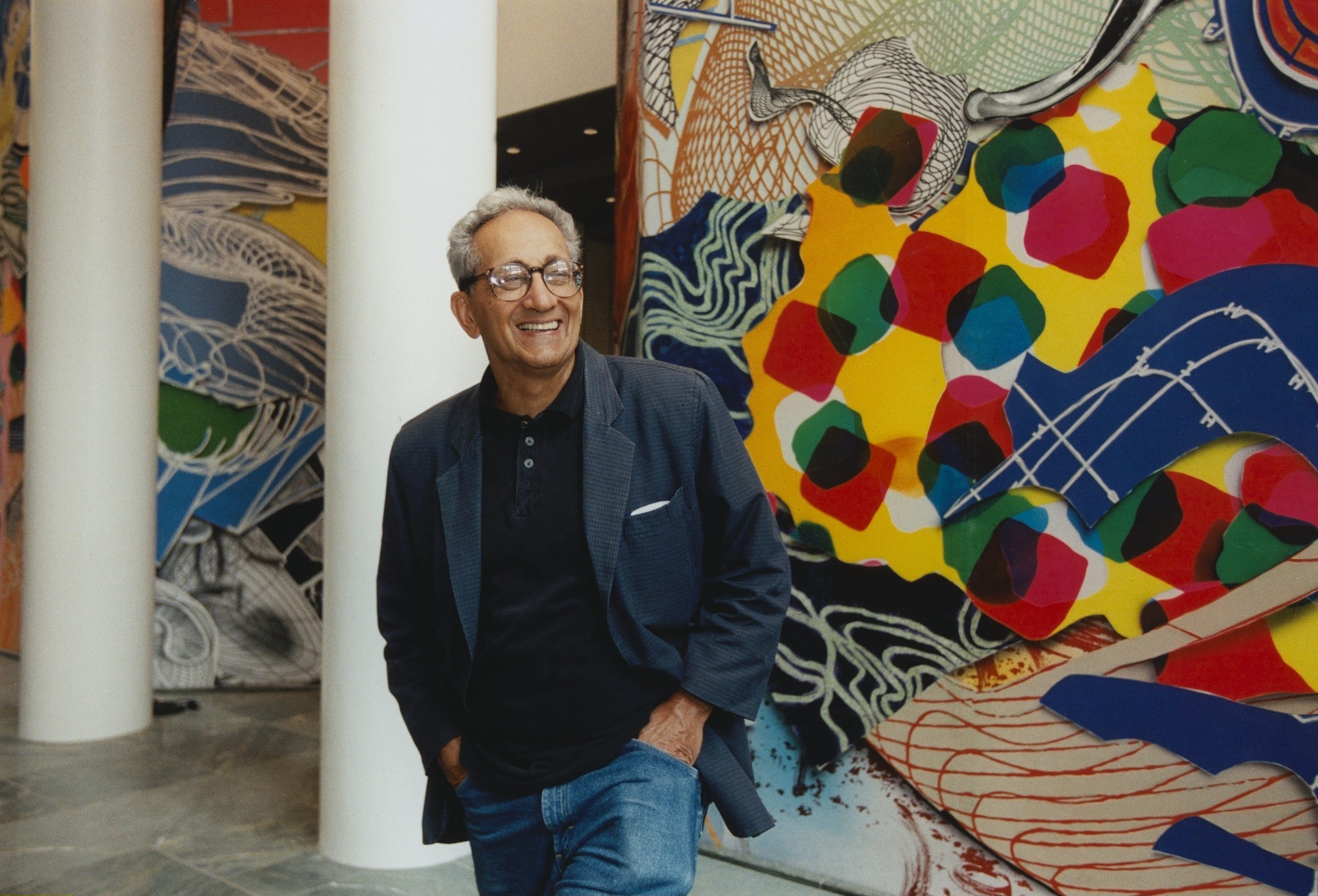Artist Frank Stella, who redirected the course of vanguard art in the 1950s and 1960s with spare, expressionless, but indelible abstract paintings, helping to usher in the style that came to be known as Minimalism, died today at the age of 87. The cause was lymphoma, his wife, Harriet E. McGurk, told the New York Times.
In late 1958, at the age of 22, Stella began using a house painter’s brush to apply black matte paint to canvases in simple configurations, one straight line after another, leaving only the faintest white space between them. Like Jasper Johns’s paintings of American flags, which Stella had seen, his “Black Paintings” seemed to foreclose the grand gestures of the reigning Abstract Expressionists. “What you see is what you see,” he famously said of his work in a 1964 interview alongside fellow artists Donald Judd and Dan Flavin.
The “Black Paintings” contain knotty contradictions. Their construction is matter of fact, and plainly evident, but they are also smoky and foreboding, even deathly in effect. Stella gave them titles like Die Fahne hoch! (“Raise the flag,” the Nazi Party’s anthem) and Arundel Castle, the 11th-century English landmark. They debuted in a legendary group show at the Museum of Modern Art in New York at the end of 1959, “16 Americans,” that also included Johns, Louise Nevelson, Ellsworth Kelly, and other key artists.
Frank Stella with his then-wife Barbara Rose, Larry Poons, Lucinda Childs, Wilder Green, Barnett Newman and William Rubin, in Rubin’s apartment in the 1960s. (Photo by William Grigsby/Condé Nast via Getty Images)
Stella was on his way, and he would soon become one of his era’s most celebrated figures. The Museum of Modern Art staged a retrospective of his work in 1970 and another in 1987. The Whitney Museum did the same in 2015. In 1964, not yet 30, he was among the artists who represented the United States at the Venice Biennale. In 2009, President Barack Obama awarded him the National Medal of Arts, praising “his sophisticated visual experiments—often transcending boundaries between painting, printmaking, and sculpture.”
Over a career that spanned more than 65 years, Stella was always on the hunt for a new language, seemingly indefatigable—and he enraged some sections of the art world with his experiments. Lecturing at Pratt Institute in Brooklyn in 1960, only 24 years old, he laid out what would become his life’s mission. “There are two problems in painting,” he said. “One is to find out what painting is and the other is to find out how to make a painting.”
A full obituary will follow.
Follow Artnet News on Facebook:
Want to stay ahead of the art world? Subscribe to our newsletter to get the breaking news, eye-opening interviews, and incisive critical takes that drive the conversation forward.


